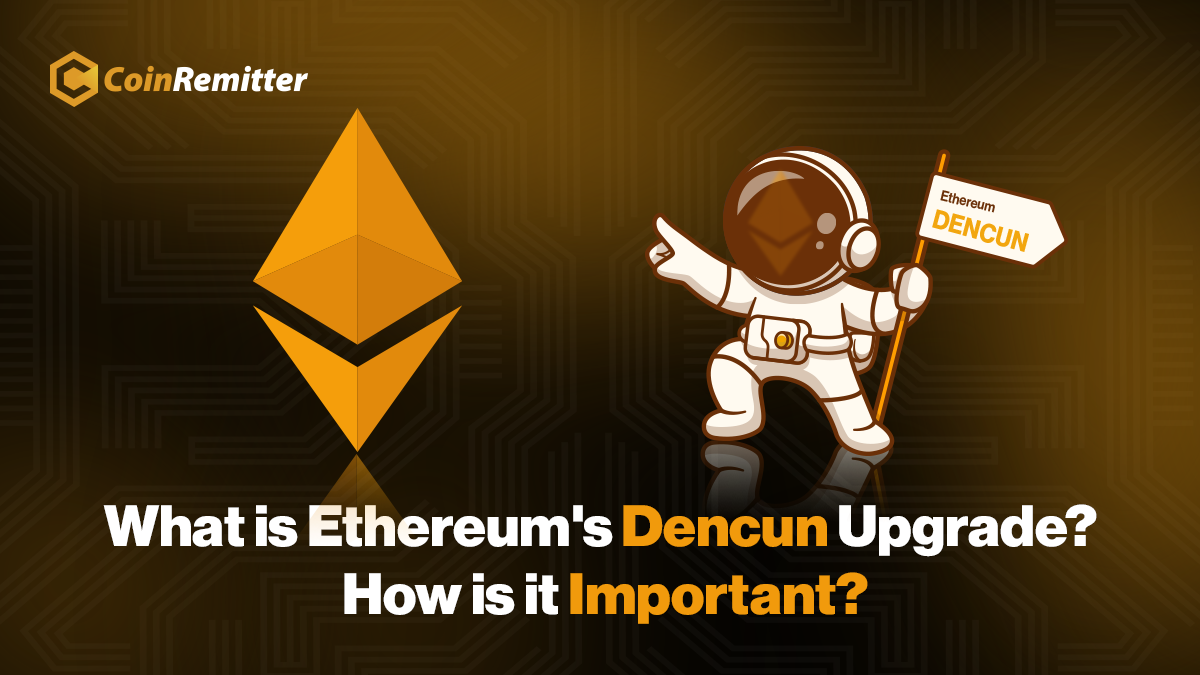Ethereum’s Dencun Upgrade
Ethereum’s Dencun EIP (Ethereum Improvement Proposal) 4844 upgrade was implemented on March 13, 2024. This upgrade is considered to be a major one. The word ‘Dencun’ combines two words, which are Deneb & Cancun, which indicates two major upgrades. The Deneb upgrade is intended to increase the value of the consensus layer, which refers to the network participants agreeing on the state of the blockchain. On the other hand, the Cancun upgrade refers to the way of managing Ethereum transactions and the process of executing them.
The Importance of Dencun Upgrade
Considering Ethereum’s price drop after the upgrade, the Dencun upgrade may seem like a reason to be worried. But this is not the case. The Dencun upgrade is considered to be a major upgrade that can resolve Ethereum’s scalability issues. It can cause a more affordable and accessible Ethereum ecosystem. Let’s see some reasons behind its importance:
1. A Larger Data Storage System (Proto-Danksharding)
Before the upgrade, Layer 2 solutions were using transaction calldata for storing the transaction data, which were replaced by blob data after the upgrade. The transaction data stored on the blockchain was limited with the calldata, nodes needed to retain them forever, which increased the burden on Ethereum validators for validating crypto payments.
Proto-danksharding has removed the limitations of the present on-chain data storage system. They use blobs to manage large volumes of data on Layer 2 solutions (outside the main Ethereum blockchain). This method is known as the rollup transaction storage method, which reduces the data overhand on Ethereum nodes, reducing the network congestion and optimizing the network size for smoother network performance.
[Also Read: AI Can Solve Ethereum’s ‘Biggest Technical Risk’: Says Vitalik Buterin]
2. Lower Fee on Layer 2 Solutions
Ethereum has been criticized for its higher gas fees. But it’s not going to be the case at least for layer-2 solutions, thanks to proto-danksharding, proposed via EIP-4844. Proto-danksharding cuts Ethereum transaction costs on Layer 2 solutions by allowing the storage of extra data outside the main blockchain (inside data blobs). Such Layer 2 networks store the transaction data to cut transaction costs before transferring them to the main Ethereum blockchain, which indicates cheaper Ethereum payments on the Layer 2 scaling solutions.
3. Chances of Increased Adoption
Lower gas fees on Layer 2 solutions can attract a higher number of individuals, which can cause a wider adoption of Ethereum for various purposes such as NFT, DeFi, crypto payments, etc. Service providers like crypto payment gateways, crypto exchanges, and some dApps may also get confident in providing Ethereum-related services. Reduced fees on Layer 2 solutions may also give a competitive edge to Ethereum due to its constant evolution.
4. Improved Security
This was not the key purpose of the Dencun upgrade. An aspect of Dencun’s EIP 4844 works as a communication link between Ethereum’s consensus layer and execution layer. The consensus layer is a layer where validators safeguard the network, while the execution layer is a layer where Ethereum transactions are processed. The communication between these layers reduces the chances for attackers to take advantage of vulnerabilities in any layer.
Another part of Dencun (EIP 6780) has changed the operation of the ‘SELFDESTRUCT’ function, which allows smart contracts to destroy themselves.
Conclusion
Apart from security and transaction data storage, Ethereum’s Dencun upgrade has addressed the most discussed issue of the Ethereum network, which is high gas fees. The usage of Layer 2 solutions can considerably reduce gas fees on Ethereum transactions. Some individuals making crypto payments on the Ethereum network may find this upgrade helpful along with the merchants accepting them. Service providers like crypto payment gateways can also become confident in featuring and promoting Ethereum. The benefits of this upgrade show its importance, causing some positive changes to the Ethereum network.
